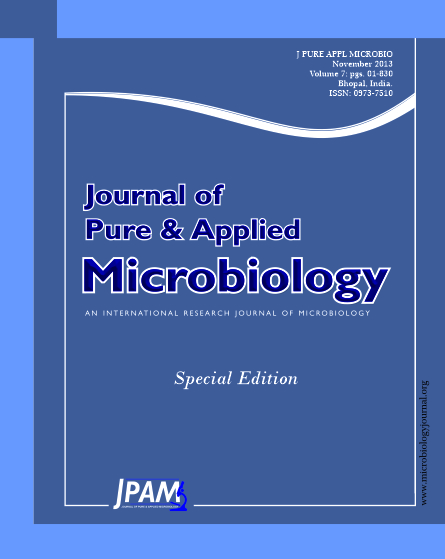Seventeen Aspergillus flavus isolates were isolated from 48 sorghum grain samples from different localities of Riyadh, in the Saudi Arabia. Potential ability to produce aflatoxins (AFs) B1, B2, G1 and G2 was studied by HPLC analysis of these AFs in the culture extracts. Ten (59%) A. flavus isolates produced detectable levels of AFs at concentrations ranging from 0.4 to 1.6 µg/kg. The isolates were classified into four chemotypes based on the ability to produce AFs and sclerotia. Random amplified polymorphic DNA (RAPD) and inter-simple sequence repeats (ISSR) markers were used, with the aim of study genetic diversity and discriminate aflatoxigenic from non-aflatoxigenic isolates. RAPD and ISSR analysis revealed a high level of genetic diversity in the A. flavus population and useful for genetic characterization. RAPD and ISSR markers were not suitable to discriminate aflatoxigenic and non-aflatoxigenic isolates, but ISSR primers were better compared to RAPD.
Genetic diversity, Aspergillus flavus, sorghum, RAPD, ISSR
© The Author(s) 2013. Open Access. This article is distributed under the terms of the Creative Commons Attribution 4.0 International License which permits unrestricted use, sharing, distribution, and reproduction in any medium, provided you give appropriate credit to the original author(s) and the source, provide a link to the Creative Commons license, and indicate if changes were made.


